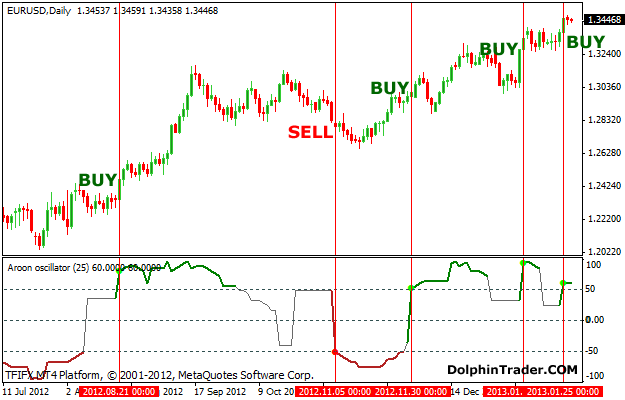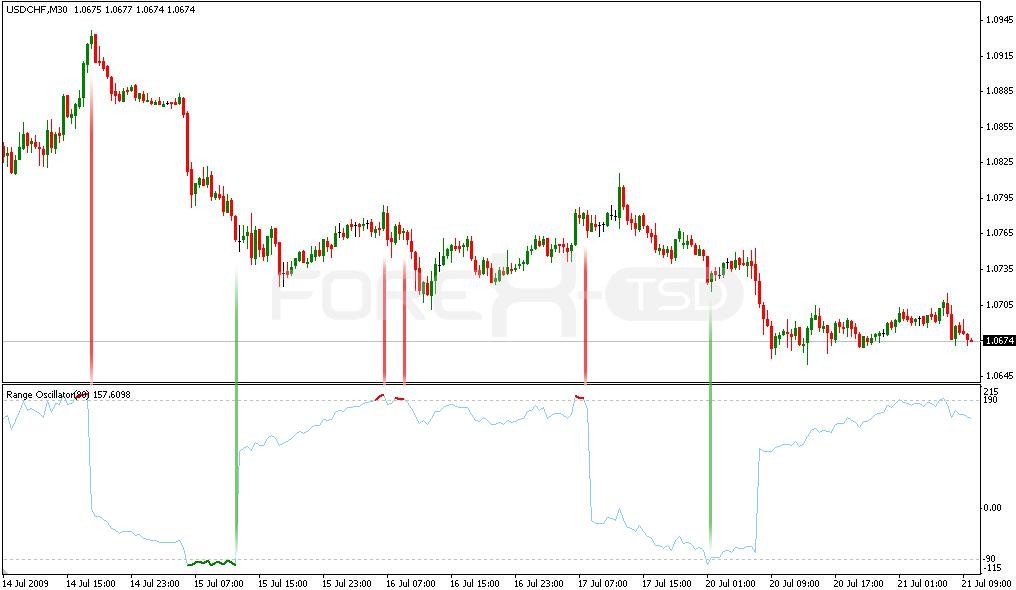Indicators and Oscillators Indicators Oscillators
Post on: 16 Март, 2015 No Comment

By Richard Cox
Indicators are chart calculations that measure the strength of price trends, volatility or momentum. Most traders look at these indicators in conjunction with moving averages and support and resistance levels to determine whether or not high probability trading setups are being formed. Indicators can help traders assess the validity of price movements and chart patterns, which, under ideal circumstances, will help traders avoid false breakouts and weak chart formations.
Indicators fall into two main categories: leading and lagging. Leading indicators anticipate future price movement while lagging indicators are used to confirm the validity of previous price activity. Earlier, we saw an example of a lagging indicator when the moving average” indicator was discussed. Leading indicators are often used when prices are trapped in sideways ranges and lagging indicators are typically used when a trader is looking to confirm trend continuation or reversal.
An additional indicator classification exists, and is found inside bounded ranges. These are called oscillators, and typically use ranges of zero to 100 to contain measurements of price fluctuations. Prices approaching the 100 level are said to be “overbought” while prices falling toward zero are said to be “oversold.
Let’s look at some of the ways trading signals are generated with these tools. The first example is the “crossover.” This was discussed in the Moving Averages article, occurring when prices break above or below the charted moving average or when a short-term moving average crosses above or below a longer-term moving average. The second example of an indicator signal is seen when prices divergence from indicator readings. What this tells us is that the price activity cannot be confirmed by the indicator, and traders should be cautious in predicting further trend movements. Below is an example:
The above example uses the Relative Strength Index (RSI), which is one of the most common indicators used by traders. RSI is a momentum indicator that shows overbought/oversold conditions, plotted in a range from zero to 100. RSI readings above 70 are thought to suggest that the asset is overbought. People considering buy positions (or those currently in buy positions) should exercise caution and consider reversing that bias. The same holds true in reverse for reading below 30, which is considered to be oversold territory.
The specific calculations for the RSI indicator are largely unnecessary because modern charting platforms do this work automatically. But, many of the indicators follow a similar rationale (in fact, most were invented by the same person, Welles Wilder), so we can take a look at the basic calculations.
RSI uses a 14-day trading basis (half a lunar month). This can be adjusted but this is the most common time frame. Here is the RSI equation: RSI = 100 100/(1 + RS). In this case, RS is equal to the average gain divided by the average loss. Average gain is determined by adding all the gains for the previous 14 periods and then dividing that number by 14. The same calculation is used to determine the losses. If these calculations seem overly complicated, you are not alone. For beginners, the main idea to remember is that a reading below 30 starts to present buying opportunities while those above 70 suggest sells are more appropriate.
The second indicator we will look at is the moving average convergence divergence (MACD). This also one of the most often-used indicators and looks a little bit different when compared to the RSI. The indicator shows two exponential moving averages of different time frames. From this, we can have an idea of the asset’s underlying momentum. The MACD plots these averages against a centerline, which is the area where both averages are equal. The final component is an exponential moving average of the MACD itself. All of these elements together enable us to measure the momentum of the current time frame versus the one that preceded it. This information allows us to draw conclusions about the directional movement that is likely to follow.

A positive MACD shows us that the shorter-term average has broken above the longer-term average. This leads traders to believe that upward momentum is now in control (the opposite is true in reverse). This is an argument to enter long positions or to close-out shorts but, as always, it is important to remember that one technical argument by itself is not enough to make a final decision. Here is and example of a MACD trade signal:
RSI generally uses 14 periods as its reference point but the MACD lines are based on information gathered from the previous 12 and 26 exponential price intervals. Remember that “exponential” essentially means that recent periods are weighted more heavily. The MACD signal line is based on a nine-day EMA of the MACD. One additional characteristic on the MACD that is not seen in other places is the “histogram,” which is plotted on the centerline and shows the difference between the MACD and the 9-day EMA. Higher areas on the histogram indicate greater levels of momentum in the current price direction. When using this indicator, trade signals are in play when the MACD crosses above the signal line (a buy signal) or below it (sell signal).
The last of the major momentum indicators that will be discussed is the stochastics oscillator. This indicator focuses on the price at the close of each charted time period, with the assumption that prices in an uptrend should be closing at the highs of recent price movements. (The reverse is true for downtrends.) This indicator also uses the zero to 100 range with conditions above 80 represented showing overbought prices and those below 20 showing a reading of oversold. Similar to the MACD, the stochastic oscillator is made up of two lines and similar to the RSI, generally uses 14 previous trading periods as its basis for calculation. Buy signals are generated when the oscillator crosses below and then back above the 20 area. The reverse is true for sell signals in the 80 region. Below is an example of a Sell signal using stochastics:














